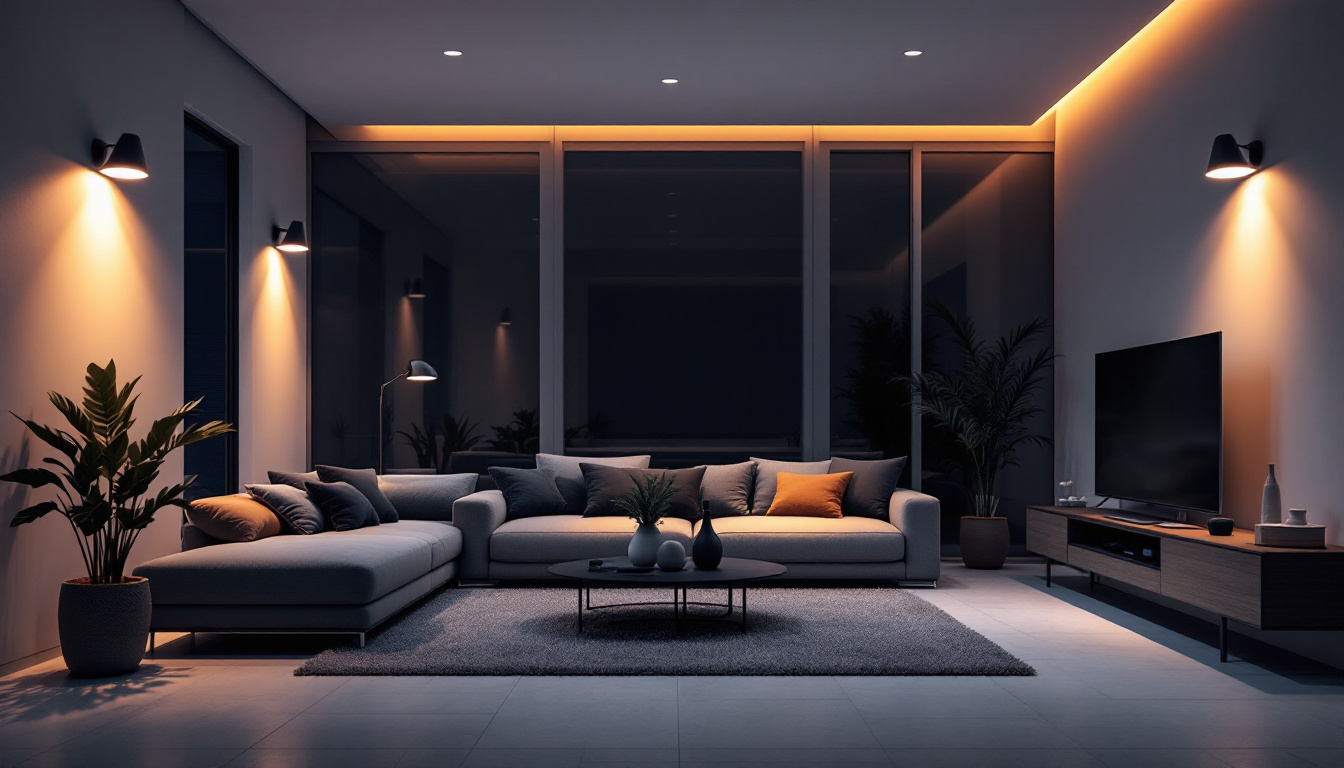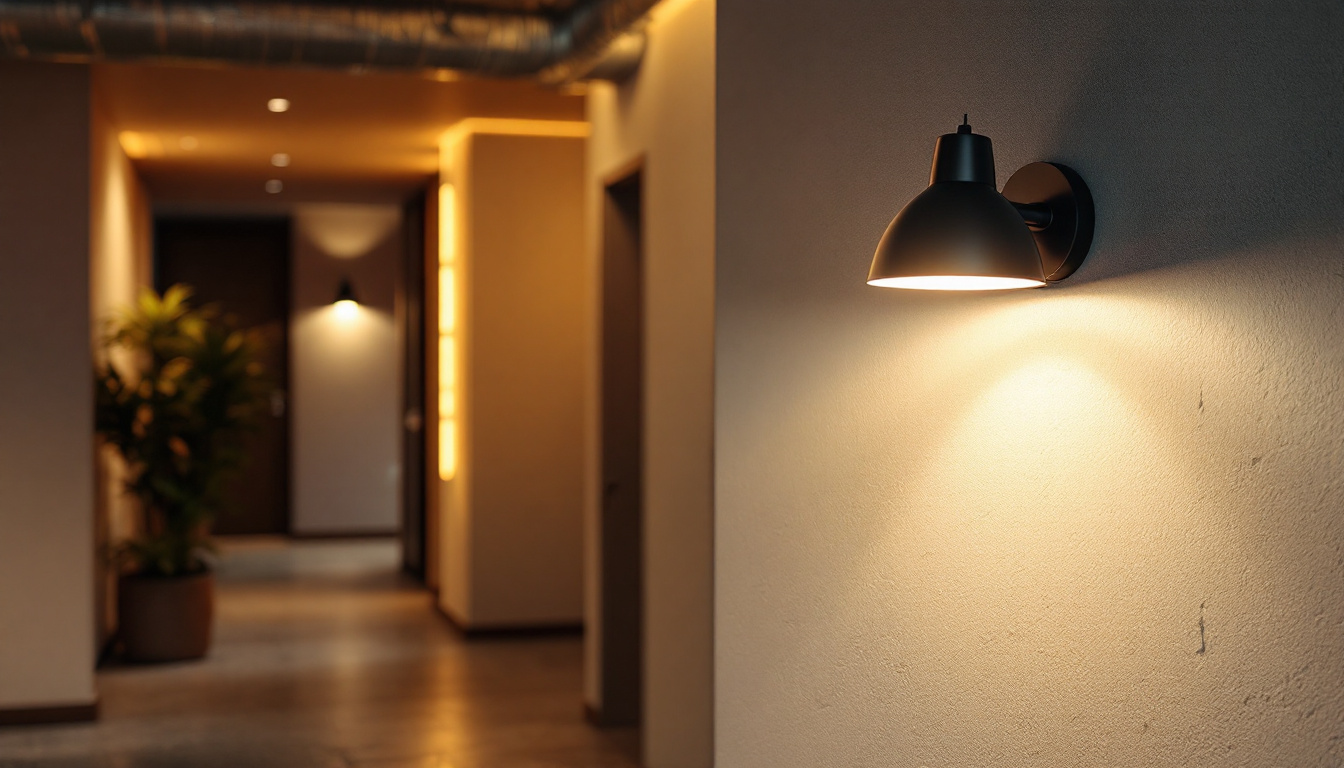
In the evolving landscape of lighting technology, LED detection sensors have become a cornerstone for modern lighting systems. For lighting contractors, mastering the intricacies of these sensors is not just beneficial—it’s essential. LED detection sensors enable efficient energy management, enhance user experience, and contribute to the sustainability goals of both residential and commercial projects.
These sensors operate by detecting the presence or absence of light or motion, triggering LED fixtures accordingly. This capability allows for smart lighting solutions that reduce energy waste and increase convenience. As lighting contractors, understanding the technical specifications, installation nuances, and application scenarios of LED detection sensors ensures that projects meet client expectations and comply with industry standards.
Energy efficiency is a paramount concern in today’s construction and renovation projects. LED detection sensors play a critical role in reducing unnecessary power consumption by ensuring lights are only active when needed. According to industry reports, buildings equipped with sensor-based lighting systems can reduce energy usage by up to 40%, a significant saving that appeals to environmentally conscious clients and regulatory bodies.
Moreover, these sensors enhance safety and convenience in spaces such as parking garages, corridors, and offices by providing automatic illumination. This not only improves the user experience but also aligns with modern building codes that increasingly mandate sensor integration for lighting systems.
In addition to their energy-saving benefits, LED detection sensors can also be integrated with smart home systems, allowing for remote monitoring and control. This feature is particularly appealing to tech-savvy homeowners and businesses looking to streamline their operations. With the ability to customize settings via mobile apps, users can adjust lighting schedules, sensitivity levels, and even receive alerts about potential issues, such as malfunctioning lights. This level of control not only enhances the functionality of the lighting system but also provides peace of mind, knowing that their spaces are well-lit and secure.
Furthermore, the versatility of LED detection sensors extends beyond conventional applications. In outdoor settings, for instance, these sensors can be used in landscape lighting, ensuring that pathways and gardens are illuminated only when necessary, thereby preserving the natural ambiance and reducing light pollution. As urban areas continue to grow and evolve, the role of LED detection sensors in creating smart cities becomes increasingly vital, fostering environments that are both energy-efficient and user-friendly.
Choosing the right LED detection sensor requires a detailed evaluation of various features that impact performance and compatibility. Lighting contractors must consider the following elements to ensure optimal results.
The sensitivity of a sensor determines how effectively it detects motion or light changes. A sensor with adjustable sensitivity allows for customization based on the specific environment—whether it’s a small office or a large warehouse. Detection range is equally important; a sensor with too narrow a range may fail to activate lighting when needed, while an excessively broad range could cause lights to turn on unnecessarily.
For example, in a retail setting, a sensor with a 360-degree detection angle and a range of 20-30 feet is often ideal, whereas in a hallway, a directional sensor with a narrower field of view may be more appropriate. Additionally, the placement of the sensor plays a crucial role in its effectiveness. Proper positioning can enhance detection capabilities and minimize blind spots, ensuring that the lighting responds accurately to human presence or movement. Lighting contractors should also consider environmental factors, such as temperature fluctuations and potential obstructions, which can affect sensor performance.
LED detection sensors primarily use two types of technologies: Passive Infrared (PIR) and Ultrasonic. PIR sensors detect heat emitted by moving objects, making them highly effective in environments where thermal contrast exists. Ultrasonic sensors emit sound waves and measure reflections to detect movement, which can be advantageous in spaces with obstacles or where PIR sensors might be less reliable.
Some advanced sensors combine both technologies to minimize false triggers and improve accuracy. Lighting contractors should assess the environment and client needs to select the most suitable sensor type. Furthermore, understanding the limitations of each technology is vital; for instance, PIR sensors may struggle in areas with constant background heat, while ultrasonic sensors can be influenced by ambient noise levels. Therefore, a thorough analysis of the specific application and conditions will lead to better sensor selection and overall system performance.
Ensuring that the sensor is compatible with the LED fixtures and any existing control systems is critical. Not all sensors work seamlessly with every LED driver or dimming protocol. Lighting contractors should verify voltage requirements, communication standards (such as DALI or 0-10V dimming), and integration capabilities with building automation systems.
Compatibility guarantees smooth operation and prevents costly rework or component replacements after installation. Additionally, contractors should consider the scalability of the system; as technology evolves, the ability to integrate newer sensors or control systems without extensive modifications can save time and resources in the long run. Furthermore, understanding the energy efficiency ratings of both the sensors and the LED fixtures can lead to more sustainable installations, aligning with modern energy-saving initiatives and regulations.
Proper installation is fundamental to maximizing the benefits of LED detection sensors. Lighting contractors must adhere to best practices to avoid common pitfalls that can compromise sensor performance.
Sensor placement directly influences detection accuracy. Sensors should be installed in locations where they have a clear line of sight to the area of interest, avoiding obstructions such as partitions or furniture. Ceiling-mounted sensors are common for wide-area coverage, while wall-mounted units may be preferable for corridor or entryway applications.
Orientation also matters; sensors should be angled to cover high-traffic zones without detecting irrelevant movements outside the intended area, which can lead to false activations. For instance, in a retail environment, sensors should be positioned to capture customer movements while avoiding interference from stock shelves or display units. This strategic placement not only enhances the efficiency of the lighting system but also contributes to energy savings by ensuring lights are activated only when necessary.
After installation, sensors must be calibrated to the specific environment. This includes adjusting sensitivity, detection range, and time delay settings. Calibration ensures that lights activate promptly when needed and turn off after an appropriate period of inactivity.
Conducting thorough testing during and after installation helps identify any issues such as dead zones or excessive triggers, allowing for timely adjustments. It’s advisable to perform multiple test runs at different times of the day to account for varying light conditions and foot traffic patterns. Additionally, utilizing data logging features, if available, can provide insights into sensor performance over time, allowing for proactive maintenance and adjustments that enhance overall functionality.
Lighting contractors must ensure that sensor installations comply with local electrical codes and safety standards. This includes proper wiring practices, grounding, and adherence to manufacturer guidelines. Non-compliance can result in safety hazards, project delays, or failed inspections.
Staying informed about evolving regulations related to sensor lighting systems is essential for maintaining professional standards and client trust. Regular training sessions and workshops can help contractors keep abreast of the latest technologies and compliance requirements. Furthermore, documenting all installation processes and compliance checks not only aids in future maintenance but also serves as a valuable resource for audits and inspections, reinforcing the contractor’s commitment to quality and safety in their work.
Maintaining LED detection sensors is crucial for sustaining their efficiency and reliability over time. Lighting contractors should educate clients on routine maintenance and be prepared to address common issues.
Dust, dirt, and debris can accumulate on sensor lenses, impairing their ability to detect motion or light changes accurately. Regular cleaning with a soft cloth and mild detergent can prevent such issues. Inspections should also check for physical damage or loose connections that might affect performance.
False triggering or failure to activate are common sensor problems. False triggers often result from environmental factors such as HVAC drafts, pets, or reflective surfaces. Adjusting sensitivity settings or repositioning the sensor can mitigate these issues.
If a sensor fails to activate the lighting, contractors should verify power supply, wiring integrity, and compatibility with the LED fixtures. Firmware updates or sensor replacement may be necessary in some cases.
As smart building technologies advance, integrating LED detection sensors with centralized control systems can enhance functionality. Lighting contractors should consider recommending upgrades that enable remote monitoring, scheduling, and energy usage analytics, providing clients with greater control and insights.
LED detection sensors are transformative components in contemporary lighting projects, offering energy savings, convenience, and compliance benefits. For lighting contractors, a systematic approach to selecting, installing, and maintaining these sensors ensures project success and client satisfaction.
Key checklist items include:
By following this comprehensive checklist, lighting contractors can confidently deliver smart, efficient lighting solutions that meet the demands of today’s market and contribute to a more sustainable future.
Ready to elevate your lighting projects with the best in LED detection sensors? Look no further than LumenWholesale, where we provide lighting contractors with the highest quality, spec-grade lighting products at unbeatable wholesale prices. Say goodbye to local distributor markups and hello to superior lighting solutions that meet the highest industry standards. Plus, with free shipping on bulk orders, you can stock up on premium lighting without worrying about hidden fees. Don’t compromise on quality or value—choose LumenWholesale for a seamless blend of affordability and convenience. Wholesale Lighting at the Best Value is just a click away.

Discover how LED pot lights are revolutionizing lighting design and installation with their energy efficiency, versatility, and sleek aesthetics.

Discover the most frequent pitfalls lighting contractors face when installing ceiling lamps.

Discover the essential insights on Bulb T Type lighting that every contractor needs to know.

Discover how lighting contractors can enhance efficiency and client satisfaction with innovative basement light fixtures.